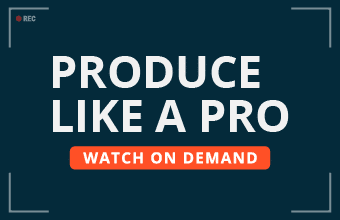Answer: It’s because he’s disrupted the landscape, whether it be by gliding down an escalator with his former model wife while blasting Neil Young, uttering his ridiculous comments about Mexican immigrants, berating Fox News personality Megyn Kelly, having his legendary hair, being on brand with his fleet of “Make America Great” hats or having a willingness to tell other Republicans where to stick it—and the list goes on.
More than anything, Trump has been disruptive because his lack of institutional respect for the traditional political process has allowed him to deliver his message, whether you agree with it or not, to its intended audience—the disillusioned American voter.
And the parallels are vast between what Trump is doing and what brands and organizations can and must do in order to accomplish their goals through strategic marketing communications.
Indeed, one could argue that “disruption” is the new innovation.
Consider that truly disruptive initiatives redefine everyday life, as many technologies are doing now, from how we socialize to how we consume media to how we make purchases. Disruption has reduced the friction of interactions and opened up opportunities like never before.
Banking and financial services—historically a commoditized space—have been disrupted by platforms such as the Square payment system and peer-to-peer digital payment technologies that even Facebook recently adopted.
Early on, Red Bull understood that a new generation didn’t want to just “have a Coke and a smile.” Rather, the brand knew its audience was mobile, active and adventuresome. It knew today’s young Americans want less watching and more doing. They don’t want to sit around and play cards, but rather, they want to race down a muddy slope and swim across icy waters.
Why is disruption so important? Because upright mammals have never been surrounded by so much clutter, which makes it harder than ever to deliver a message and achieve a goal. Think about it: We have information (such as billboards, text messaging, social platforms, email, IMs, carrier pigeons, sandwich boards and geotargeting) barreling down our throats at every corner, and that’s just the tip of the iceberg.
It’s why, when we concept strategic initiatives for clients, disruption is where we begin. We can’t simply rely on block and tackle tactics such as the highly inefficient notion of writing two news releases per month or advertising on “Days of Our Lives.” And the results have proven out as the disruptors are the ones who are winning.
One campaign we created for H&R Block drove the tax authority’s highest number of tax returns in history because it was ridiculous and stood out from the blah that it has traditionally used. We put U.S.-based crop forecaster Lanworth on the map by telling its story relative to the movie “Trading Places,” leading to its purchase by Thomson-Reuters; and we helped drive 30 percent year-over-year online sales for Charter Communications for three years because we came up with fresh idea after fresh idea.
That’s disruption, and done effectively, disruption leads to very real business results.
So next time you’re sitting around your office wearing comfortable slacks, sipping your civet coffee and concepting what to do next for a client, ask yourself if the ideas on the whiteboard are truly disruptive before you waste your client’s time.
Guest contributor Aaron Perlut is the Founding Partner of Elasticity.










